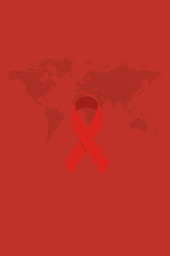Bye bye (see you later) Ebola
Published in Microbiology
I promise to write about something other than emergent virus diseases (at least now and then), but today we could not post to “In the news” without marking WHO’s announcement of the end of all currently known chains of Ebola transmission. Overall, the West African outbreak, the first outside its traditional East African dwelling, has killed 11,315 people and 28,637 cases were confirmed (with several thousand more suspected). Before this outbreak, there had been 2,458 known confirmed cases of Ebola virus infection worldwide, which gives an idea of the magnitude of this last outbreak. Local virus transmission was reported in 10 countries, although the epicentre and hardest hit were Sierra Leone, Guinea and Liberia, who achieved disease free status on Nov 7th, Dec 29th and today, respectively. It is worth noting that Liberia had been declared virus free before, but new cases emerged, likely owing to virus persistence in seminal fluid, which prompted the careful wording of this morning's WHO announcement warning of possible future flare-ups.
During this outbreak, there was a separate and lesser publicised one affecting 66 cases in the Democratic Republic of Congo —a more traditional geographical location for EBOV. The reasons for the change in geographical location, and wider spread of the West African outbreak are still unclear, and the object of intense research. The population was unfamiliar with the disease and the local health authorities less prepared to deal with an EBOV outbreak, but there may also be particular characteristics of the virus that facilitated spread. The response, and ultimate containment, of this outbreak was possible thanks to a tremendous international effort, which although initially sluggish, eventually rose to the challenge.
The role of anthropologists in the response cannot be sufficiently emphasized. It has proven crucial in informing both local populations and health authorities of the measures needed and how to implement them and, thus, in ending the current epidemic. The need to understand the communities affected by a disease has become a priority, and has shaped the way the international community responded to this outbreak and hopefully will respond in the future.
The focus now is shifting to identifying the elusive EBOV reservoir(s) and better understanding the dynamics and epidemiology of this outbreak, as well as continued efforts to find treatments and vaccines against EBOV.
[Update on 15/01/2016]
PS: As it turns out, see you later was more like see you soon and a new case of confirmed Ebola death in northern Sierra Leone —Ebola free since Nov 7th— was reported earlier today.





Please sign in or register for FREE
If you are a registered user on Research Communities by Springer Nature, please sign in